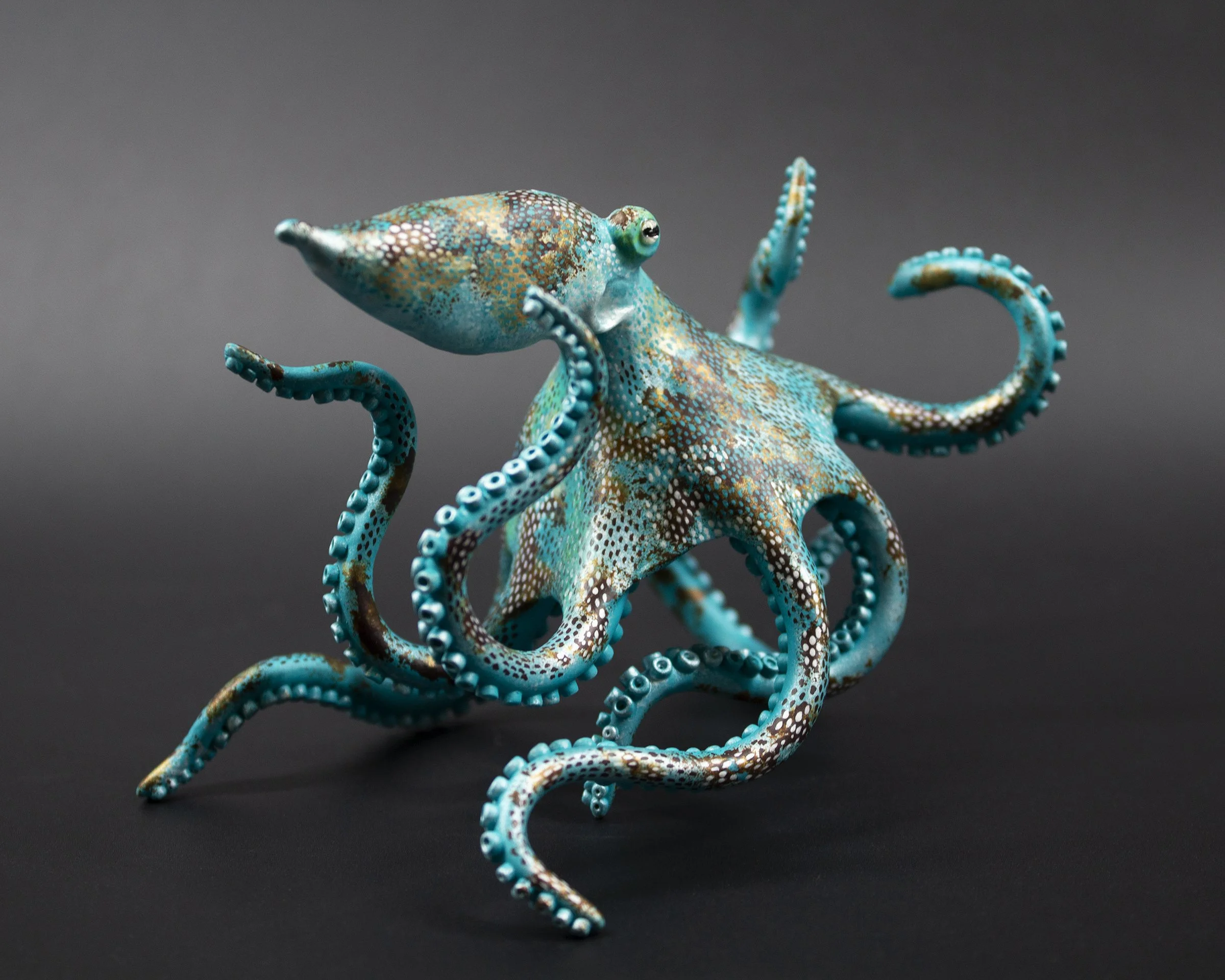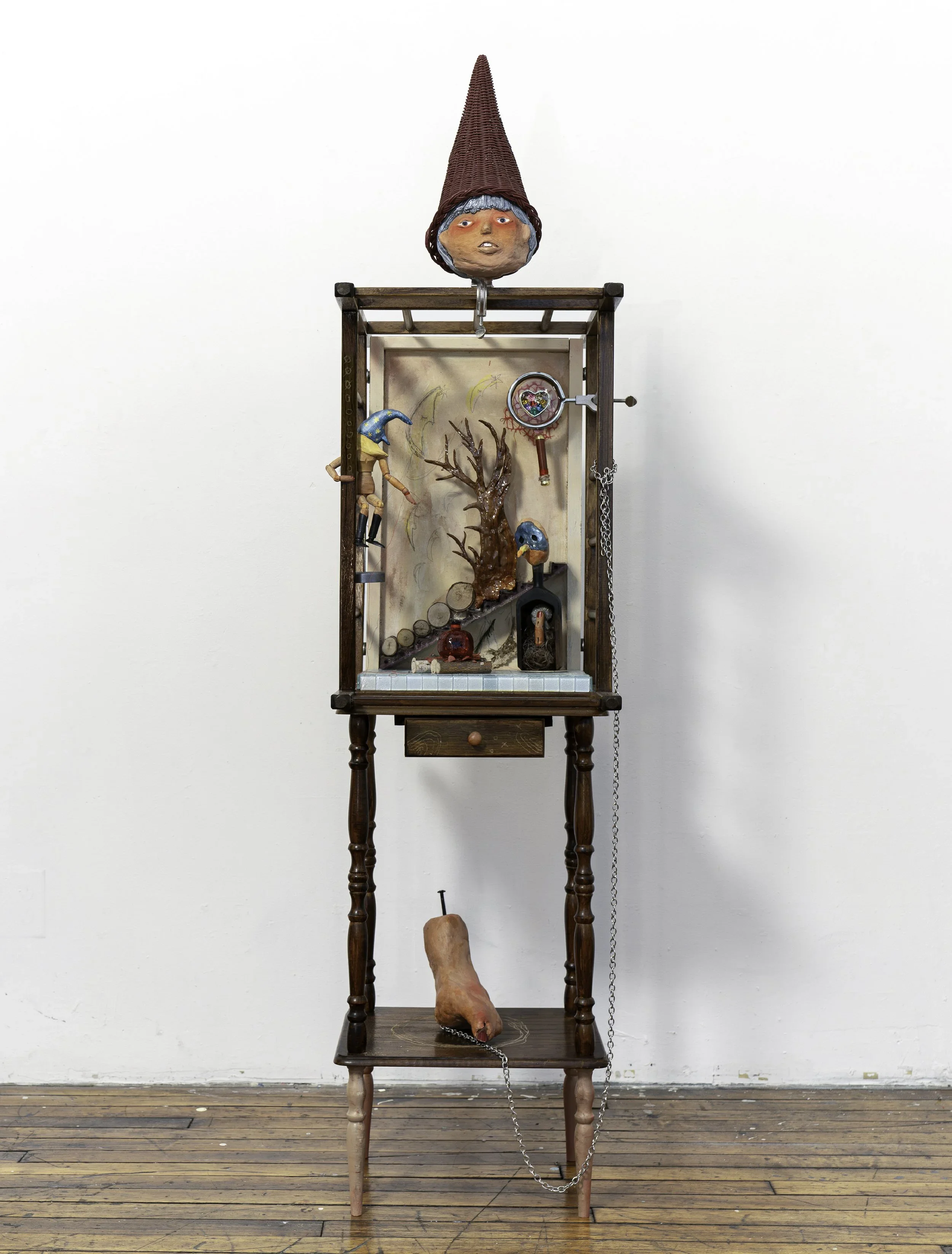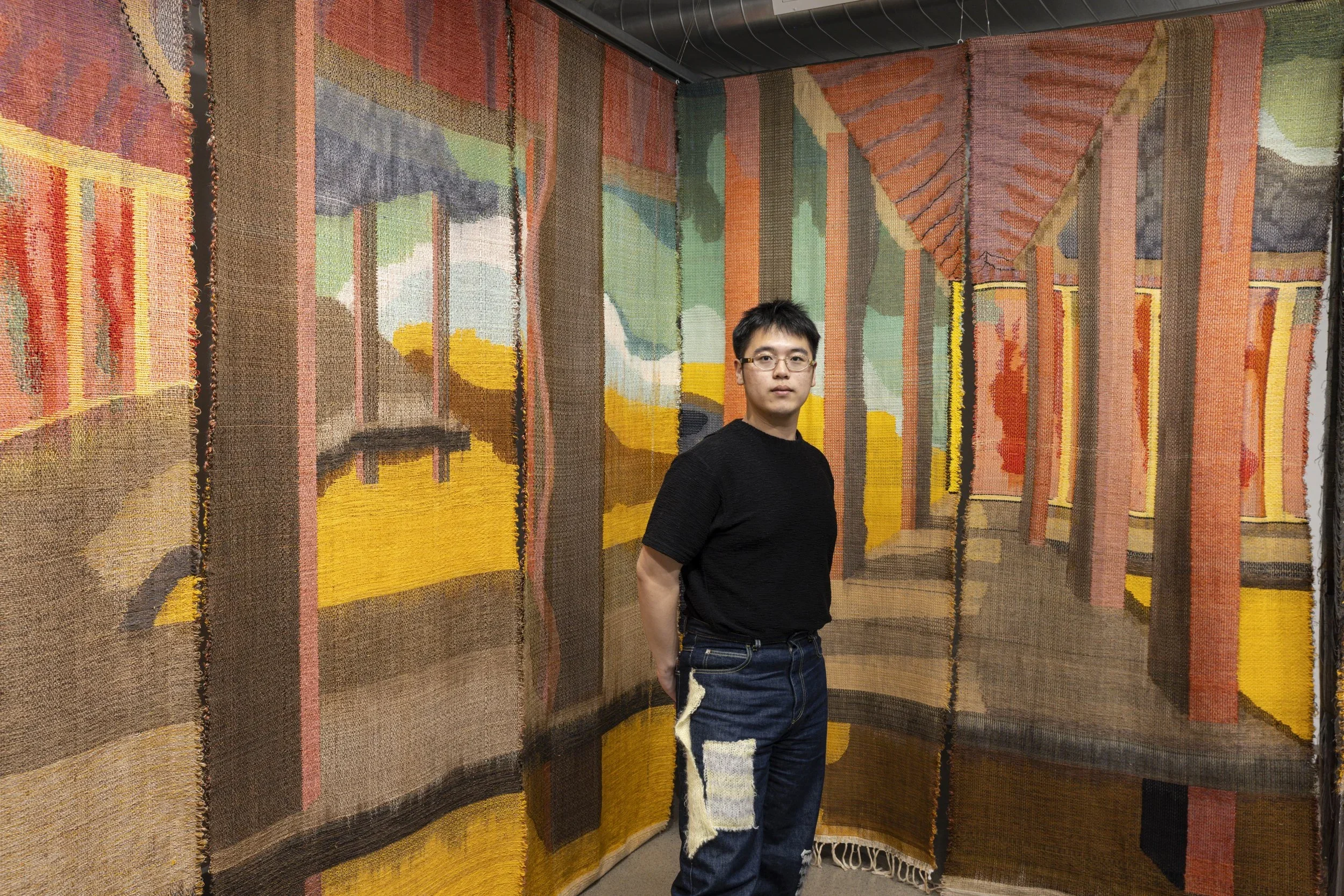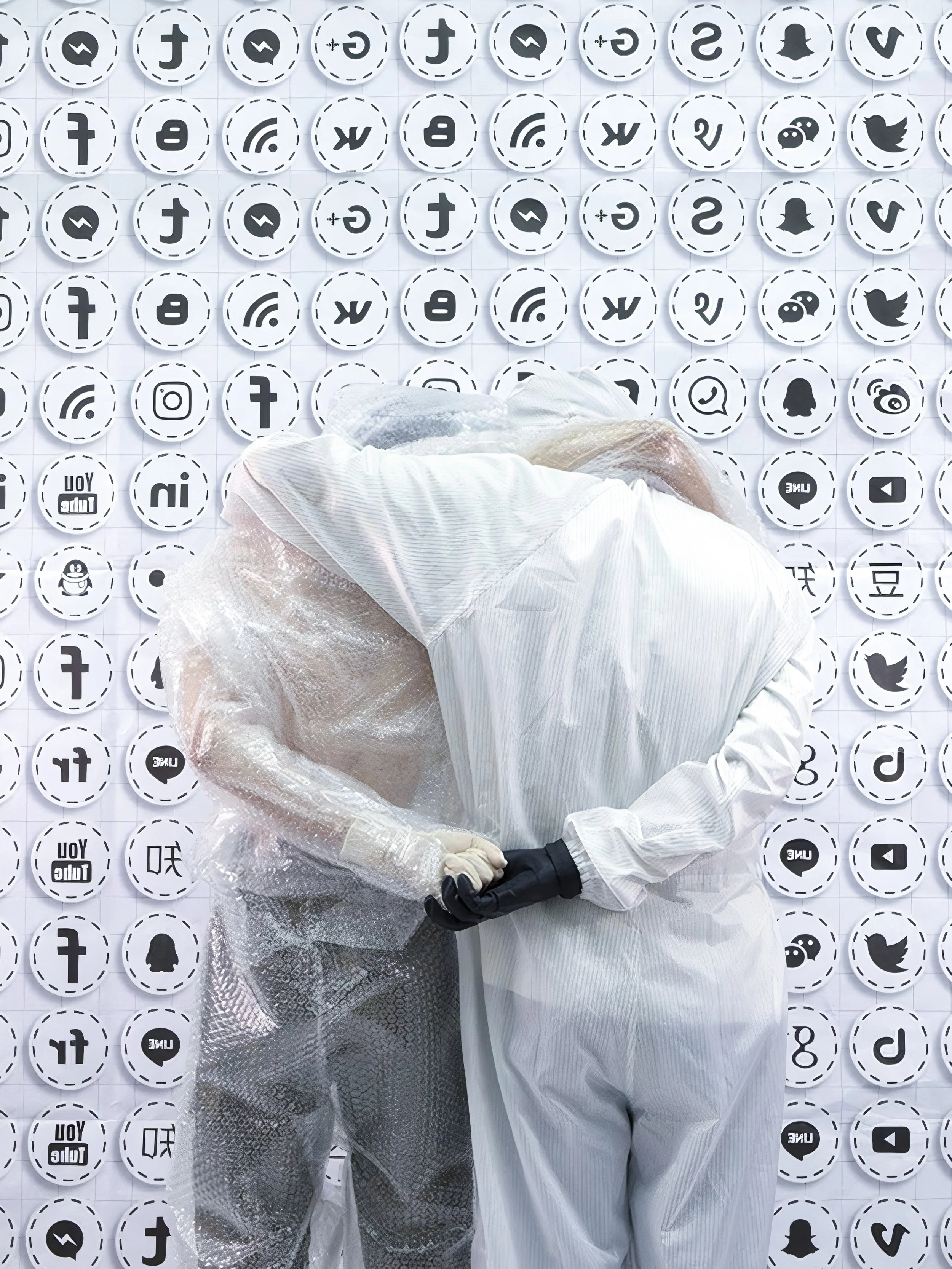10 Questions with Sahasa
Sahasa is a Dutch, European artist who primarily works in sculpture and draws inspiration from the natural world, with a particular focus on ocean and coral reef ecosystems.
Finding an exact starting point in Sahasa's creative journey may be a challenge, as they were creating from an early age and continued to paint, draw and write throughout the years. Growing their skill and experience through dedicated, self-determined learning.
Sahasa began exploring sculptural and transparent resin encapsulation techniques in 2014, and the tactile nature and responsiveness of clay connected immediately with Sahasa, which led to this medium becoming a significant part of their preferred method of creation.
Sahasa's interest in octopuses began around 2017, and since then, they have continued to explore and expand upon this subject through a variety of materials and techniques. Creating lifelike representations of various octopus species, corals and similar themes, sorted into gradually evolving collections such as "Octopus Tea Cups" and starting in 2023 "Sculpted Reef."
Sahasa - Portrait
ARTIST STATEMENT
As an artist and sculptor, Sahasa is especially inspired by the sophisticated and varied nature of the octopus species. Corals are another beloved and intricate subject that they enjoy exploring. Sahasa's fascination with octopuses began in 2017 when they were researching several key reef species as potential art subjects. A video showcasing the fluid movements and captivating presence of a fully grown Giant Pacific Octopus (Enteroctopus dofleini) instantly captured Sahasa's attention. Starting from that point, octopuses have gradually become Sahasa's most beloved subjects.
With 70% of our planet covered by water, it is no surprise that a large number of living species on Earth are aquatic. Within this vast array of life, octopuses constitute an incredibly biologically unique group consisting of over 300+ species. Many of them are yet to be fully described and researched. We do know that octopuses are intelligent, problem solvers, have emotional states and the ability to perceive the emotional component of pain, are much more social than previously thought, and exhibit play and tool use. They may even experience dreams.
Sahasa continues reviewing scientific articles and books about octopus, and expanding their visual library as much as possible in order to enrich their creations. Sahasa's sculptures are built on top of a strong, complex armature, created from wire, mesh and epoxy-reinforced materials. The sculpture's body can consist of a variety of clays, such as grades of polymers and types of epoxy clays, which are chosen based on their characteristics.
Some of Sahasa's artwork includes vintage porcelain or other objects. Works are finished with a wide range of speciality pigments, paints and an eclectic mix of materials. For example, Sahasa's corals are hand-built with precision-made glass beads patiently set on wire.
“Capturing colourful reefs, octopus personalities and movement in sculpture with a high level of detail. Depicting the intelligence, adaptability, and dexterity of the octopus through sculpture.”
Melody, Polymer Clay, 140x85x85 mm, 2025 © Sahasa
INTERVIEW
Let's start from the beginning. When did you first realise you wanted to become an artist, and what role did creativity play in your early years?
Creativity has been present in my life for as long as I can remember. As a child, I was constantly crafting, drawing, and writing, and at home, this creative exploration was a regular part of childhood playtime. Creativity was always there, like a red thread, sometimes in small ways and sometimes taking up a larger role. Rather than a single moment of realisation, becoming an artist felt like a natural continuation of how I've connected with the world and expressed my interests.
How did you move from painting and drawing to working mainly with sculpture?
Sometime during 2014, I was expanding my artistic interest in koi and koi ponds. I had been painting and drawing koi for a few years by then, but these techniques started to feel restrictive for what I wanted to highlight about this subject. Particularly, my fascination with how light interacts with ponds and how this can change from moment to moment. To better achieve this vision, I began learning about resin encapsulation techniques and ultimately turned to clay for koi, pond turtles, etc. From there, clay opened up exciting possibilities and quickly became my preferred medium.
Octopus Garden IX No.11, Sculpted Reef Series, Polymer Clay, glass beads, Mixed, Media, 130x130x125 mm, 2025 © Sahasa
What drew you to clay as a medium, and what do you enjoy most about working with it?
Initially, clay was the answer to a creative problem I was trying to solve, but what continues to draw me to it is its tactility and the creative possibilities it offers. From a creation perspective, it presents a compositional challenge and a vision raised by the question, 'What do you want this to be?' As the artwork grows under my hands, it becomes a physical form of this vision. Beyond this personal creative joy, I love that viewers are invited to engage differently with work that exists on multiple dimensions.
Could you walk us through your creative process? What techniques and materials do you use to build your sculptures?
My creative process can shift depending on the series I am developing work for, but for example, with my freestanding octopus sculptures, it usually starts with an idea of what I want to convey: the species, the character, and the story I hope to tell. I don't make concept sketches, but I do take some notes, for example, about the intended height and width. From there, I construct a metal armature, reinforced with Apoxie clay where extra support is needed. Paying careful attention to stability and flexibility. The sculpture grows as I add and carve layers of clay, shaping the form through a balance of building up and taking away.
Once the sculpture is complete, I prime, paint and add speciality pigments, then varnish it. I pay special attention to the eyes, finishing them with a resin layer to add more depth. The whole process is a conversation between the materials and my vision, letting the sculpture develop organically. While generally staying true to the movement and personality I want to capture, there is always room for spontaneity and growth.
What first inspired you to focus on octopuses, and why do they continue to be such an important subject in your work?
I've long been fascinated by coral reefs, so when I was looking to expand my work from koi ponds in 2017, exploring key reef species felt like a natural next step. The aquatic theme also aligned with the resin techniques I had been developing, allowing me to continue building on that knowledge. One species I encountered was the octopus. At the time, octopuses did not have a very positive reputation in pop culture and were often depicted as sea monsters, so there was much to discover about what they actually are. During this research, I stumbled upon a video of a fully grown Giant Pacific Octopus - its majestic presence and graceful movements immediately captivated me. I began delving into scientific articles and became even more fascinated by how unusual and intelligent these animals are. With hundreds of species, many still not fully described, octopuses offered rich potential for creative exploration.
Since 2017, their reputation has shifted dramatically, thanks in large part to documentaries like My Octopus Teacher, National Geographic's Secrets of the Octopus, and contributions from authors such as Sy Montgomery, Danna Staaf, and many others. I also appreciate Warren Carlyle's "OctoNation", the world's largest octopus fan club, for helping shift public perception and expanding knowledge about these remarkable creatures. This change in perception has real-world effects, including awareness and support for conservation efforts, such as the removal of illegal and discarded octopus traps in the Mediterranean Sea by the Sea Shepherd organisation, as well as initiatives to develop legislation banning commercial octopus farms.
Scientific research remains the primary foundation for my octopus artworks, though my personal fascination has infused them with a certain gentleness and dream-like quality. Even so, octopuses are both predators and prey, and a vital part of reef ecosystems. Ongoing studies continue to deepen my fascination, and this enduring curiosity has kept octopuses central to my practice to this day.
Aurora (detail), Polymer Clay, 220x160x220 mm 2024 © Sahasa
Coral Garden No. 10 (detail), Sculpted Reef Series, Polymer Clay,Glass Beads, Mixed Media, 130x130x130 mm, 2025 © Sahasa
How do you capture the intelligence, movement, and unique personality of octopuses in your sculptures?
Through research, we know crucial information about the octopus's mind, intelligence, and how it uses its body. For example, research about octopus "handedness," arm movements, body postures, and camouflage patterns, and what they communicate, all help inform how I depict these animals in sculpture. Video resources are especially useful for capturing the unique motions of an animal that has no bones and operates with individually firing brain structures (ganglia) in each of its eight arms. These factors influence both form and colour in my work.
While I deeply appreciate reference materials and have gathered a treasure trove of information over the years, my octopus art is not purely scientific. It is informed by science and reality but filtered through my particular human lens and perspective. This informs the choices I make when envisioning, shaping, colouring, and ultimately building each piece. This approach is also why I do not only depict realistic species. You'll also find nebula-themed octopuses, and fanciful flowing patterns with a nod to historical and cultural depictions of octopuses and many more excursions into joyful and vibrant topics.
Alongside octopuses, you also sculpt corals and reef ecosystems. What attracts you to these subjects?
Coral reefs are the natural home of many octopus species. The reefs are true jewels in our oceans: a song of rhythm, texture, colour, and life. It is easy to love such a source of natural beauty and wonder.
I mainly create corals and reef elements by hand-weaving tiny Miyuki glass beads (rocailles) on silver wire. I've had an appreciation for rocailles since childhood, and even built a modest collection at the time. This appreciation came full circle when I was searching for materials that would allow me to depict the elegance of corals as I envisioned them: delicate yet resilient, vibrant, and textured. It is a time-consuming process that takes patience and even stubbornness at times. I find it humorous and frustrating, in turns, how it mirrors the slow growth of real corals.
Despite how time-consuming they are, the corals are an absolute joy to make, and creating these mini reefs as homes for my octopus sculptures is such a great and almost meditative experience. My Sculpted Reef series has been, and continues to be, a true joy to work on.
You often read scientific articles about octopuses. How does research influence your artistic process?
Scientific research plays an important role in developing the foundation for my octopus artworks. Even after making art about octopuses for several years, I am actively keeping up with research. The data helps inform the choices I make in pose, arm positioning, form, and colour, guiding a depiction of each species that has a solid basis in reality.
At the same time, my work is filtered through my own perspective. It is not purely scientific. Research is groundwork, but the final pieces balance biological accuracy with expressive qualities. This allows me to shape a story around the character of the octopus while creating sculptures that are visually engaging, emotionally resonant, and uniquely my own.
Halcyon, Polymer Clay, 145x185x145 mm, 2025 © Sahasa
Carina, Polymer Clay, 130x145x105 mm, 2025 © Sahasa
What projects or directions are you most excited to explore next in your artistic journey? Do you plan to incorporate new animals or themes in your work?
I am most excited to add work to my Sculpted Reef Series and develop it further. New reef species will be introduced, starting with iconic sharks and fish. In terms of themes, I'm developing this series' direction to lean more boldly on imagination and symbolism while still keeping a solid foundation in naturalistic depiction. My goal is to continue balancing scientific accuracy with creative expression, creating work that is both engaging and evocative.
And lastly, where do you see yourself and your work in five years from now?
While no one can know the future, in the next five years, I'd like for my skill and ultimately my artwork to become more closely aligned with my vision. Even more importantly, for the artwork to continue to connect with the people who share my appreciation for marine life and the joy of the reef in all its vibrant colour and rhythms.
Artist’s Talk
Al-Tiba9 Interviews is a promotional platform for artists to articulate their vision and engage them with our diverse readership through a published art dialogue. The artists are interviewed by Mohamed Benhadj, the founder & curator of Al-Tiba9, to highlight their artistic careers and introduce them to the international contemporary art scene across our vast network of museums, galleries, art professionals, art dealers, collectors, and art lovers across the globe.






















